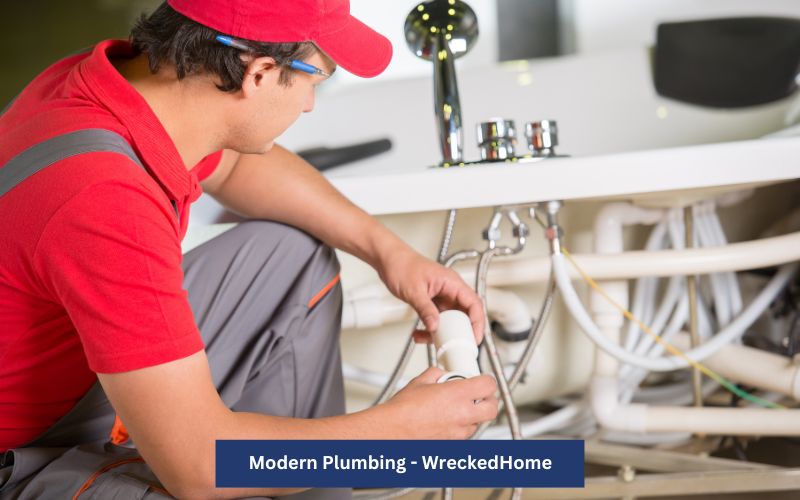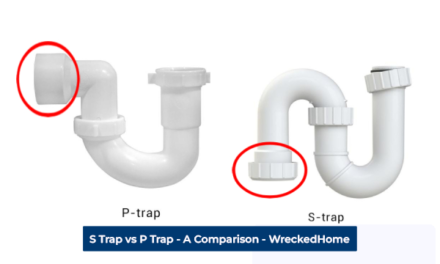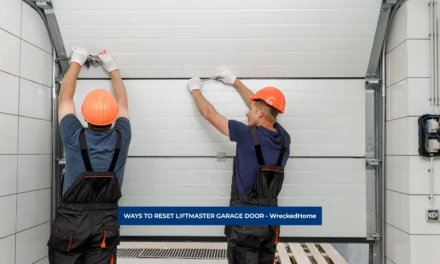The importance of a modern plumbing system can never be denied because it is the circulatory system of any building’s ability to silently and efficiently channel water. Without any differentiation, a well-crafted plumbing network ensures the delivery of clean water while safely removing waste in homes, offices, or industrial setups.
With the evolving of technology, the concept of plumbing has transcended its traditional form. The entrance of technology in modern plumbing and water channeling ensures plumbing systems are now more intricate, efficient, and environmentally friendly than ever.
The goal is to overcome challenges like excessive water consumption, inflated energy bills, sanitation issues, and even structural harm linked with poorly designed plumbing systems.
So if you are looking to replace your poor traditional plumbing system with modern one then you are in the right place. In this guide, you will have a firm grasp for crafting a modern plumbing system by knowing the step by step guidelines.
Traditional Vs. Modern Plumbing
The most used traditional plumbing systems evolved over centuries and are based on materials like cast iron, clay, and galvanized steel. No doubt it is a widely used system from time to time but they have issues like corrosion, limited flexibility, and susceptibility to scale build-up. It requires more labor force and costs to install and repair.
Conversely, the second but advanced option is modern plumbing. It takes over the traditional system with the advantage of technology and material advancements like PVC, PEX, and stainless steel. These strong material options offer longer life spans, greater resistance to corrosion, and flexibility.
The more likeable thing of modern plumbing is its features of smart technology connectivity and eco-friendly innovations. By adopting the advanced system water-saving fixtures, efficient heating systems, and waste-reducing technologies everything shifts towards sustainability.
Key Components of a Modern Plumbing System
Do you know about key components and the working system of modern plumbing? Its crucial to understand pivotal components of a plumbing system that is both efficient and effective. These core elements act as the building blocks of the entire modern system by fulfilling specific roles and functions. Let’s explore its key components
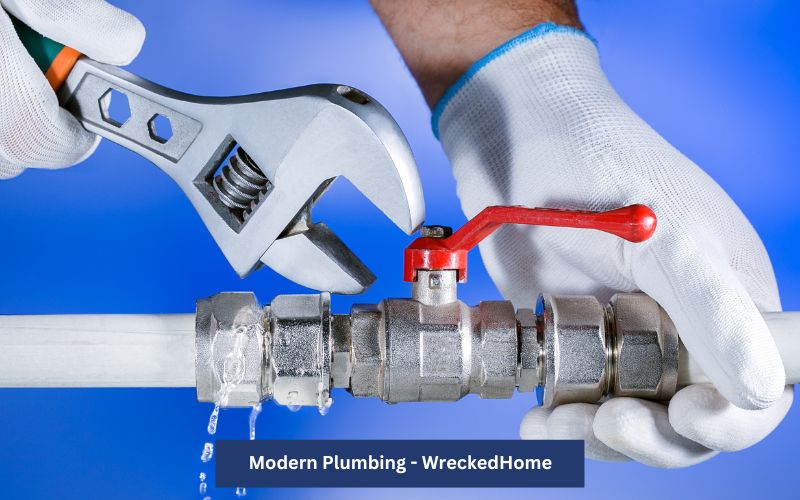
1. Pipes and Fittings
Modern plumbing uses durable and lightweight material as compared to cast iron and galvanized steel of the past. PVC is well known due to its corrosion resistance property and affordability. While PEX is more flexible and can be used in tight spaces and complex layouts. Copper with its longevity and ability to endure high temperature is still a common choice in plumbing. These efficient and lower labor cost materials are the best options for easy installation and non-stop performance.
Visit our store for 10% off our Tools here.
2. Valves and Controls
Valves are the unsung heroes of any plumbing system, that are responsible for precise control of water flow and pressure. Easy troubleshooting and maintenance requirements makes modern valves a reliable addition in your plumbing. There are three common modern systems to automate and regulate water flow and temperature that are pressure reducing valves, thermostatic mixing valves, and solenoid valves. Some of the valves you can even control from mobile apps from anywhere.
3. Fixtures
With the advancement in technology, there are automated fixtures such as sinks, toilets, and showers. The most widely used materials that are popular for aesthetic appeal and durability are stainless steel, tempered glass, and ceramics. With touch less control, automated system in modern plumbing is increasingly common.
4. Water Heaters
Now there is an advanced system to deliver hot water with automatic and energy efficient technology systems. They are fast, small in size and cost effective. The core popularity of Tankless water heaters is quick to deliver hot water and space-saving designs. You can control them by sitting anywhere due to an app system. One thing that makes them a sustainable energy source while reducing utility bills is solar water heaters availability.
5. Pumps and Circulation Systems
The main role of a pump is to make the water channel every part of a building, and modern pumps are engineered for maximum efficiency. The modern pump come with variable speed options that you can adjust according to usage. For example, you can save energy when demand is low.
The water circulatory system is efficient when there is hot water required. In this way, hot and cold water recirculate and reduce the amount of wasted water while waiting for it to warm up.
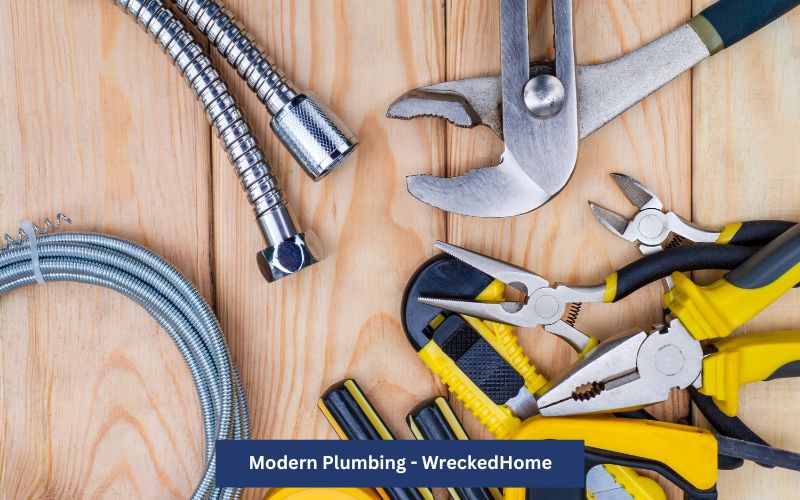
Planning and Design
For successful implementation of your plumbing system the most important step is the actual planning and design stage. The key aspects of planning and design for modern plumbing are site conditions, integration with existing structures, safety norms, and sustainability goals.
1. Site Assessment and Plan Drafting
The very first step when you are going for modern plumbing system is to assess the related space. This comprehensive site assessment consists of the layout of the building, understanding water usage patterns, and identifying the location. In this way well-drafted plan, usually facilitated by CAD software ensures easy installation and working efficiency.
2. Integration with Existing Structures
When you are looking to replace traditional plumbing, then it’s crucial to integrate the new plumbing system seamlessly with existing structures. This process is based on PVC and PEX integration in existing structures.
3. Safety and Regulation Compliance
A well-designed plumbing system must fulfill the building codes, and safety standards according to environmental guidelines. It’s not only necessary for longevity of the system but also the safety of its users. Make sure there are pressure regulators, and a proper ventilation system for proper functioning.
4. Sustainability Considerations
Modern plumbing is focused on sustainability through eco-friendly materials, integrating water-saving fixtures, and considering alternative water heating options. They not only contribute to environmental conservation but also financial savings by choosing things like solar heaters.
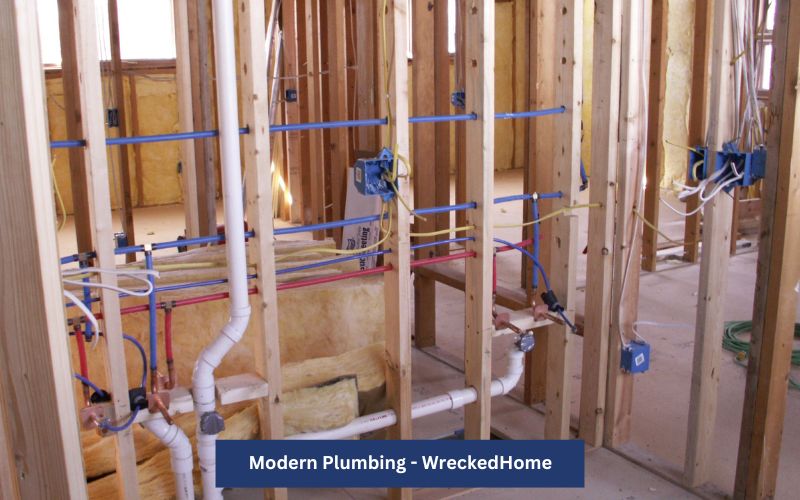
Step-by-Step Design Process
Now you should implement your ideas and plan a modern plumbing system. For this, let’s delve into the step-by-step process as a checkpoint that ensures the project stays on course and meets all its objectives.
1. Consult with Stakeholders
For flawless and budget friendly set up, consult with stakeholders involved—homeowners, architects, engineers, and even local authorities. They help you in building your entire project that meets specific needs and environmental standards.
2. Preliminary Design Draft
To draft design that needs to be implemented is the information from stakeholders help in hand made sketches or computer-aided design (CAD) software for more complex systems. The draft should be crystal clear that indicates key components, route of pipes, and connection points.
3. Material Selection
Material selection that meets your requirements and longevity is crucial. Choosing a durable and flexible material is key to project success. For this, you must choose material like PEX and Copper for flexibility and durability respectively.
4. System Sizing
Once you have done material selection successfully, the next step is to size the system correctly. For this, calculate the diameter of pipes, the capacity of water heaters, and the power of pumps that meet your demands.
5. Review and Approvals
Before the final decision, its essential to review and recheck plans to meet safety standards, building codes, and environmental guidelines. Once you reached requisite approvals, finalize the design plan. This is called a blueprint that contractors and installers follow in the modern plumbing system project.
Smart Plumbing Systems
Smart plumbing systems consist of water monitoring, leakage detection, and a remote control system. Let’s discuss how these make modern plumbing efficient.
1. IoT-Enabled Water Monitoring: A Real-Time Solution
A real time solution for using modern and smart plumbing systems is the ability to monitor water usage through IoT technology. It also helps in monitoring the leakage or the fault in the plumbing system. Through this technology you will get the data to make precaution measures to rectify inefficient water consumption practices.
2. Leak Detection Systems: Protecting Your Property and the Environment
Water leakage is insidious that it not only leads to water wastage but also can also result in property loss. Improper plumbing systems can result in potential damage to property and the environment. Incorporating the modern plumbing system integrates advanced leak detection mechanisms. Modern technology users get alerts and easy to detect water leakage pipes. Through early detection and problem solving techniques you can lower water wastage and the associated environmental risk.
3. Remote Control via Dedicated Apps: The Power at Your Fingertips
Modern plumbing systems come with the dedicated control smartphone apps. These user friendly applications not only ease you in controlling but also help homeowners in time saving. You can easily turn on and off the water heater with ease and efficiency.
In this way, modern plumbing with water-saving technologies and smart features meets today’s standards to make your home environmentally friendly. By adding these technology features your home or office looks more luxurious.
5 Essential Tips for Maintaining Your Smart Plumbing System
To avoid any hindrance and loss you need to take care of and maintain modern smart plumbing systems. Here are some of key tips that ensures good care of your smart plumbing system:
- Regular Software Updates: Just like other smart systems, plumbing also require regular updates. So keep in check regular updates that can improve efficiency, fix bugs, or add new features.
- Regular Physical Inspection: Although it’s a smart system also pay attention to pipes, faucets, and other traditional plumbing fixtures.
- Real-time Monitoring: Utilize the real-time monitoring features to check water usage, pressure levels, and temperature to ensure everything is functioning correctly.
- Backup Power: Smart systems require continuous supply of electricity. For proper functioning, ensure you have a backup power solution, such as a UPS.
- Professional Maintenance: Although you can handle minor repairs, to keep your project long lasting you must seek for professional help.
Conclusion
To design a modern plumbing system must follow the guidelines that combine traditional principles with cutting-edge technologies. In this article, everything is discussed from choosing material to integrating smart features. Focus on modern and efficient plumbing systems that fulfill functional necessities but as long-term investments in both comfort and sustainability.
For any repairs, installations, builds, or questions; We recommend you to hire a professional. Find A Pro Near You Here!

